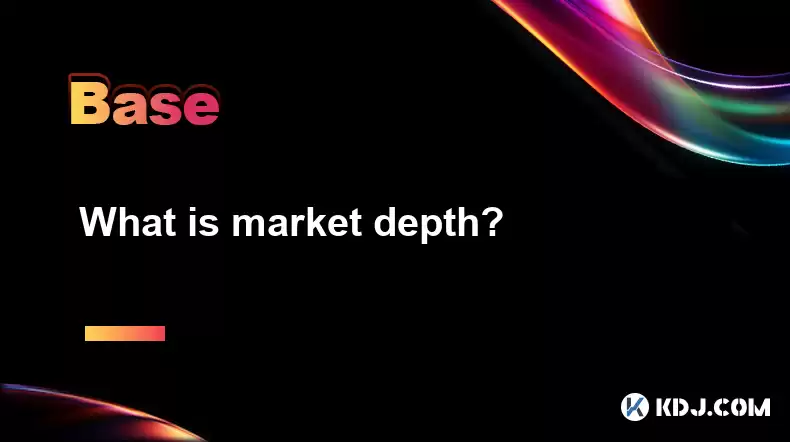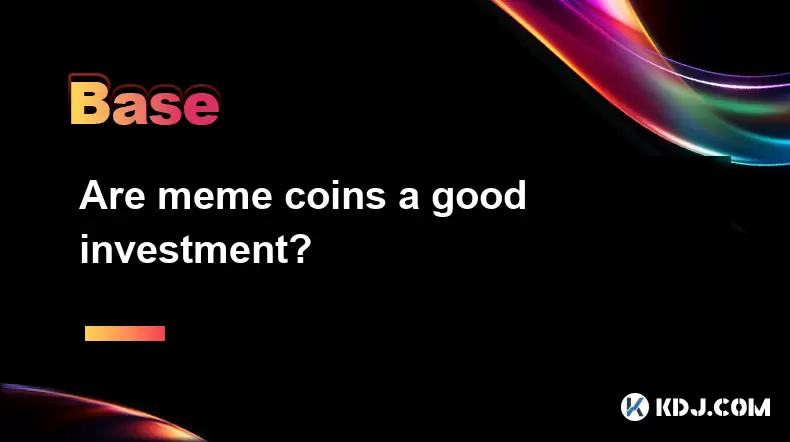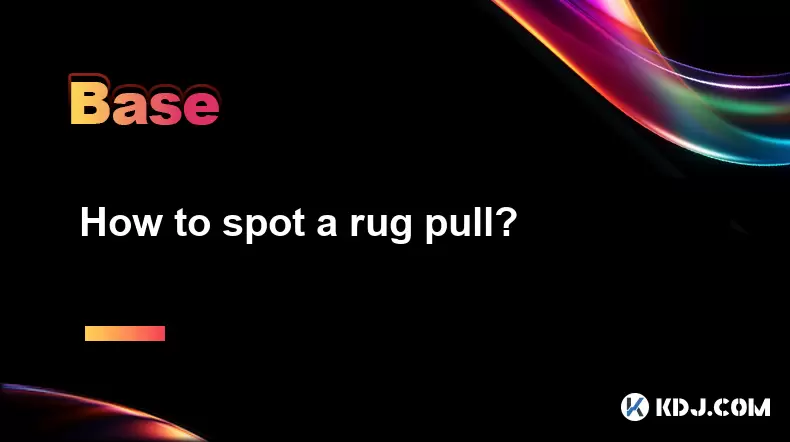-
 Bitcoin
Bitcoin $116700
0.24% -
 Ethereum
Ethereum $3973
4.34% -
 XRP
XRP $3.283
7.68% -
 Tether USDt
Tether USDt $1.000
0.01% -
 BNB
BNB $789.8
2.27% -
 Solana
Solana $176.2
3.31% -
 USDC
USDC $0.9999
0.00% -
 Dogecoin
Dogecoin $0.2238
5.14% -
 TRON
TRON $0.3389
-0.51% -
 Cardano
Cardano $0.7907
4.03% -
 Stellar
Stellar $0.4527
10.02% -
 Hyperliquid
Hyperliquid $41.07
4.27% -
 Sui
Sui $3.794
1.77% -
 Chainlink
Chainlink $19.49
10.40% -
 Bitcoin Cash
Bitcoin Cash $580.9
0.74% -
 Hedera
Hedera $0.2617
4.32% -
 Avalanche
Avalanche $23.41
3.67% -
 Ethena USDe
Ethena USDe $1.001
-0.03% -
 Litecoin
Litecoin $122.4
1.38% -
 Toncoin
Toncoin $3.364
1.49% -
 UNUS SED LEO
UNUS SED LEO $8.988
0.37% -
 Shiba Inu
Shiba Inu $0.00001295
2.82% -
 Uniswap
Uniswap $10.62
5.75% -
 Polkadot
Polkadot $3.922
4.46% -
 Dai
Dai $1.000
0.01% -
 Bitget Token
Bitget Token $4.494
2.15% -
 Monero
Monero $268.0
-1.30% -
 Cronos
Cronos $0.1523
3.68% -
 Pepe
Pepe $0.00001127
4.43% -
 Aave
Aave $285.4
4.85%
What is market depth?
High market depth in cryptocurrencies, indicated by numerous buy and sell orders at various price points, ensures price stability and facilitates large trades without significant slippage, unlike thin markets vulnerable to manipulation.
Mar 16, 2025 at 03:08 am

Key Points:
- Market depth represents the number of buy and sell orders available at various price points in an order book. It's a crucial indicator of liquidity.
- High market depth signifies a robust and liquid market, allowing for large trades without significantly impacting price.
- Low market depth indicates a thin market, vulnerable to price manipulation and slippage.
- Market depth can be analyzed using order book visualizations and trading volume data.
- Understanding market depth is crucial for informed trading decisions and risk management.
What is Market Depth?
Market depth in the cryptocurrency context refers to the total number of buy and sell orders present at various price levels within a specific cryptocurrency's order book. This essentially shows how many buyers and sellers are willing to transact at particular price points. A deeper market has more orders at each price level, indicating substantial liquidity. Conversely, a shallow market has fewer orders, suggesting less liquidity. This metric is vital for assessing the market's resilience to large trades.
How Does Market Depth Affect Cryptocurrency Trading?
Market depth directly influences the price stability and ease of executing trades. A deep market can absorb large buy or sell orders without causing significant price fluctuations. This is because there are numerous counterparties willing to trade at similar prices. Conversely, a shallow market is susceptible to price manipulation and slippage, where the actual execution price differs significantly from the expected price due to a lack of available orders.
How to Analyze Market Depth in Cryptocurrencies?
Most cryptocurrency exchanges provide tools to visualize market depth. These usually take the form of order book charts, displaying the number of buy and sell orders at each price level. The chart often uses a vertical axis to represent the price and a horizontal axis to represent the volume of orders at that price. The visual representation gives a clear picture of the order book's depth. Analyzing trading volume data alongside the order book can provide further insight into market depth and liquidity. High volume coupled with deep order books indicates strong market confidence and liquidity.
Factors Affecting Market Depth in Cryptocurrencies:
Several factors influence the market depth of a cryptocurrency. These include the overall market capitalization of the cryptocurrency, trading volume, the number of active traders, regulatory changes, and market sentiment. A cryptocurrency with a large market capitalization and high trading volume generally exhibits greater market depth than those with smaller market caps and lower trading volumes. News events and regulatory developments can significantly affect market sentiment, leading to increased or decreased market depth.
Interpreting Market Depth for Trading Strategies:
Traders use market depth analysis to inform their trading strategies and manage risk. High market depth provides a degree of confidence that large trades can be executed without significantly affecting the price. This is crucial for institutional investors executing large orders. Conversely, shallow market depth signals a higher risk of slippage and potential price manipulation. Traders might avoid placing large orders in shallow markets or use limit orders to mitigate price impact.
What are the implications of high market depth?
High market depth is generally considered a positive indicator of market liquidity and stability. It means that large trades can be executed with minimal price slippage, reducing the risk of significant losses for traders. It also suggests a greater resilience to market manipulation attempts, as large orders are less likely to significantly move the price. This attracts both institutional and retail investors, boosting trading volume and further strengthening market depth.
What are the implications of low market depth?
Low market depth, on the other hand, poses significant risks to traders. Large orders can easily move the price, leading to substantial slippage and potentially large losses. The market becomes more vulnerable to manipulation by large players who can artificially inflate or deflate the price. This can discourage trading activity, leading to a self-reinforcing cycle of reduced liquidity and market depth.
How to identify market depth on an exchange?
Most cryptocurrency exchanges offer tools to visualize market depth. These are usually presented as order book charts or depth charts, showing the number of buy and sell orders at various price points. Look for features like "Order Book" or "Market Depth" within the trading interface. The chart will typically display the bid (buy) and ask (sell) orders, often using color-coding to distinguish between them. The horizontal axis usually represents the quantity of orders, and the vertical axis represents the price.
Frequently Asked Questions:
Q: Is high market depth always better than low market depth?
A: While high market depth is generally preferable for its increased liquidity and stability, extremely high depth in certain circumstances might indicate manipulation or a lack of genuine trading interest. It's crucial to consider market depth in conjunction with other factors like trading volume and price action.
Q: Can market depth predict future price movements?
A: Market depth itself does not directly predict future price movements. However, it provides valuable context for interpreting price action. For example, a large buy order hitting a shallow market might suggest a potential upward price movement, but this is not a guaranteed outcome.
Q: How does market depth relate to volatility?
A: Generally, higher market depth is associated with lower volatility. Deep markets can absorb large trades without significant price swings. Conversely, shallow markets are more prone to volatility as smaller trades can disproportionately affect the price.
Q: Are there any risks associated with trading in markets with high market depth?
A: While high market depth generally reduces risk, there are still risks. Unexpected news or market events can still cause price fluctuations, even in deep markets. Additionally, the perception of high depth might be misleading if it's artificially inflated through manipulative practices.
Q: How often should I check market depth before trading?
A: The frequency of checking market depth depends on your trading style and risk tolerance. Day traders might check it frequently, while long-term investors might only check it periodically. However, understanding the market depth before entering any significant trade is always advisable.
Disclaimer:info@kdj.com
The information provided is not trading advice. kdj.com does not assume any responsibility for any investments made based on the information provided in this article. Cryptocurrencies are highly volatile and it is highly recommended that you invest with caution after thorough research!
If you believe that the content used on this website infringes your copyright, please contact us immediately (info@kdj.com) and we will delete it promptly.
- Punisher Coin: The Altcoin Ready to Punish Your Portfolio with Gains?
- 2025-08-08 22:50:16
- Mutuum Finance, Bitcoin Whales, and Binance: Decoding the Crypto Currents
- 2025-08-08 22:30:11
- Bitcoin, Crypto Market, Volatility: Riding the Rollercoaster in NYC Style
- 2025-08-08 22:50:16
- HTX Copy Trading Extravaganza: Rewards and Opportunities for Traders
- 2025-08-08 23:30:12
- SPX6900 Pumps & TOKEN6900 Presale: Month Growth Mania!
- 2025-08-08 23:30:12
- Dogwifhat, Beanie, and $800,000: A Meme Worth Millions?
- 2025-08-08 23:35:12
Related knowledge

Can you reuse a crypto wallet address?
Aug 08,2025 at 03:49pm
Understanding Wallet Addresses in CryptocurrencyA crypto wallet address is a unique identifier used to send and receive digital assets on a blockchain...

Are meme coins a good investment?
Aug 08,2025 at 11:36pm
Understanding Meme Coins and Their OriginsMeme coins are a category of cryptocurrencies that originated from internet humor or viral trends rather tha...

How are flash loans used?
Aug 08,2025 at 01:08pm
Understanding Flash Loans in Decentralized FinanceFlash loans are a unique innovation within the decentralized finance (DeFi) ecosystem, allowing user...

How to spot a rug pull?
Aug 08,2025 at 11:21pm
Understanding the Concept of a Rug PullA rug pull is a type of scam prevalent in the decentralized finance (DeFi) and cryptocurrency space where devel...

What is the environmental impact of crypto mining?
Aug 09,2025 at 12:28am
Energy Consumption of Cryptocurrency MiningThe environmental impact of crypto mining begins with its substantial energy consumption, primarily driven ...

What are common crypto trading strategies?
Aug 08,2025 at 12:42pm
Understanding Trend Following in Crypto TradingTrend following is one of the most widely adopted crypto trading strategies due to its simplicity and a...

Can you reuse a crypto wallet address?
Aug 08,2025 at 03:49pm
Understanding Wallet Addresses in CryptocurrencyA crypto wallet address is a unique identifier used to send and receive digital assets on a blockchain...

Are meme coins a good investment?
Aug 08,2025 at 11:36pm
Understanding Meme Coins and Their OriginsMeme coins are a category of cryptocurrencies that originated from internet humor or viral trends rather tha...

How are flash loans used?
Aug 08,2025 at 01:08pm
Understanding Flash Loans in Decentralized FinanceFlash loans are a unique innovation within the decentralized finance (DeFi) ecosystem, allowing user...

How to spot a rug pull?
Aug 08,2025 at 11:21pm
Understanding the Concept of a Rug PullA rug pull is a type of scam prevalent in the decentralized finance (DeFi) and cryptocurrency space where devel...

What is the environmental impact of crypto mining?
Aug 09,2025 at 12:28am
Energy Consumption of Cryptocurrency MiningThe environmental impact of crypto mining begins with its substantial energy consumption, primarily driven ...

What are common crypto trading strategies?
Aug 08,2025 at 12:42pm
Understanding Trend Following in Crypto TradingTrend following is one of the most widely adopted crypto trading strategies due to its simplicity and a...
See all articles

























































































